Word from the Smokies: The staying power of Smokey Bear, beloved icon for fire safety
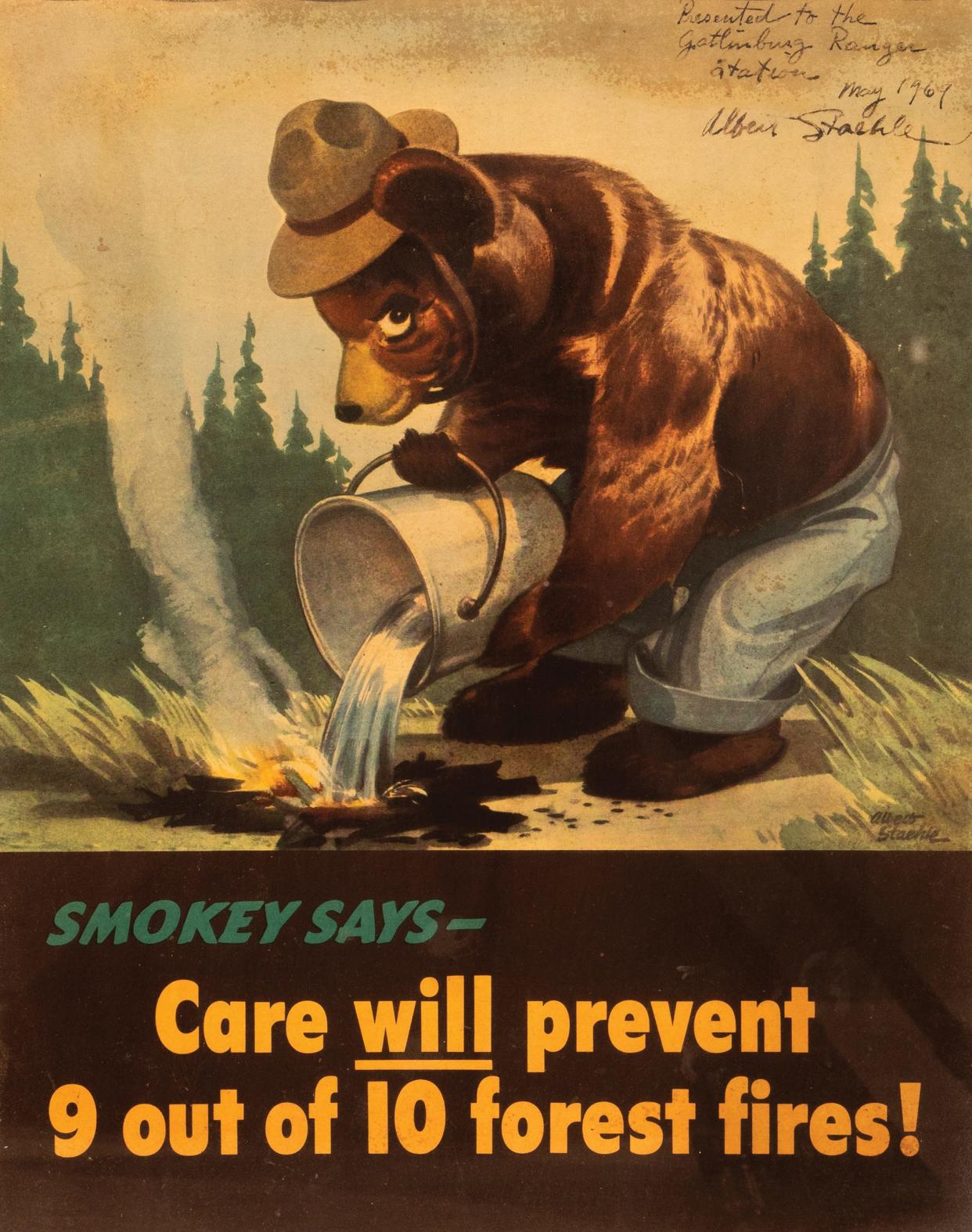
Many people of a certain age have a special affection for Smokey Bear, or “Smokey the Bear,” as he has also been called.
I remember reading Smokey’s story — how he was rescued from a wildfire in New Mexico in 1950 and became the symbol of fire awareness in the woods for generations. Posters and signs showing Smokey in a park ranger hat were ubiquitous in those first years after the bear’s appearance on the national stage.
As a kid riding in our family’s old Chevrolet into Great Smoky Mountains National Park, I made an immediate connection between Smokey and the Smokies and assumed that the names somehow were related. I admit, however, that I was confused about the two spellings: “Smokey” for the bear and “Smoky” for the park. I couldn’t reconcile that disparity in my young brain, and I’m sure the two spellings still confuse some folks.
Smokey’s story is one of survival against the odds. As fire swept through the Capitan Mountains in New Mexico, the black bear cub became trapped and apparently orphaned by the blaze. He climbed into a tree and managed to escape the worst of the flames but nevertheless sustained badly burned paws and legs before a firefighting crew found him.
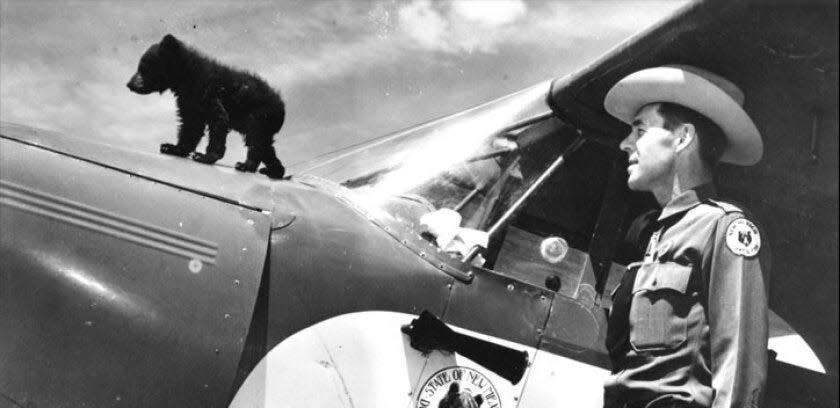
After the cub was treated for his burns in Santa Fe and news of his harrowing experience continued to spread, he was made into a popular icon for fire prevention by the US Forest Service and eventually relocated to the National Zoo in Washington, DC. There, Smokey lived out his days becoming such a celebrity that the U.S. Postal Service granted him his own ZIP code to accommodate the fan mail.
More:Word from the Smokies: New bee discovered after fire in Great Smoky Mountains
More:Word from the Smokies: Plant life makes a comeback after 2016 wildfires
After his death in 1976, Smokey was buried in a place of honor at Smokey Bear Historical Park in New Mexico. Often depicted with a firefighting shovel, Smokey remains a striking symbol for conservation and responsible stewardship across numerous landscapes — even if the nuances of his fire-prevention message have evolved over the years.
Today, SmokeyBear.com continues to share information about campfire safety, but Smokey’s website also features educational resources about fire science and the ecological benefits of fire for different ecosystems. Keeping pace with more contemporary understandings of fire ecology, Smokey helps young people learn about the oak-hickory forests and Southern pine communities that rely on fire disturbance to remove shade, reduce leaf litter on the forest floor, and disperse the seeds of certain trees with serotinous cones, like the Table Mountain pine found in the Great Smoky Mountains.
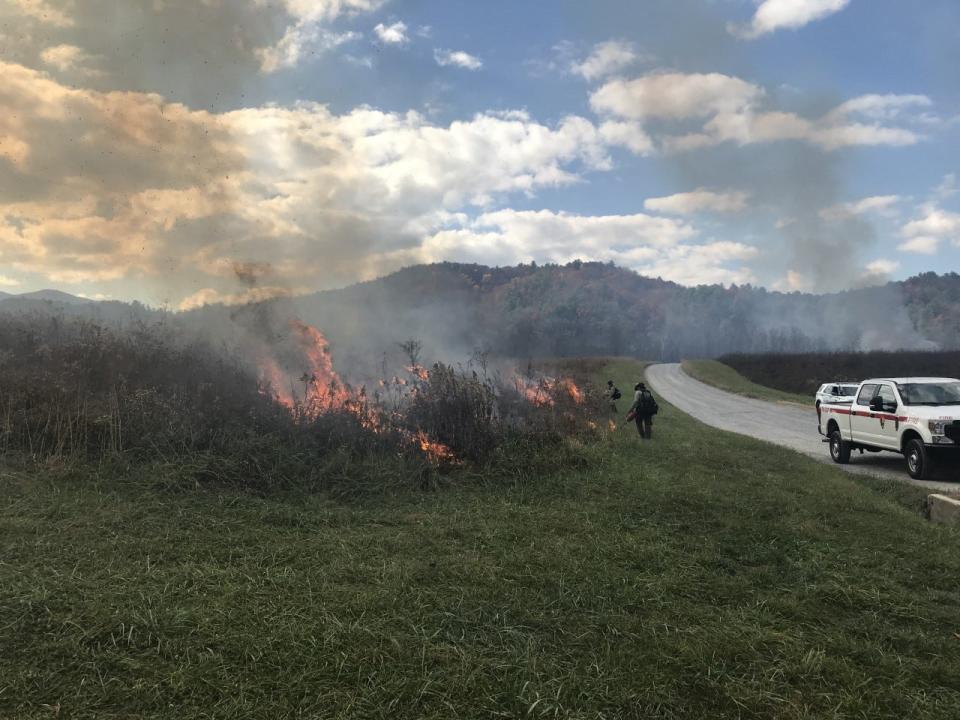
Smokey still sticks by his old catchphrase — “Only you can prevent wildfires.” But his message also acknowledges the importance of controlled burning and the long history of Native Americans using fire to reshape and rejuvenate the landscape.
More:Word from the Smokies: A brief history of air quality monitoring
More:Word from the Smokies: Bears sometimes cross roads to get our garbage
This fall, a team including Great Smoky Mountains National Park and Appalachian Piedmont Coastal Fire staff conducted prescribed burn operations in the Cades Cove area of the park. Although shifting weather conditions prevented the team from burning the entire 1,200-acre target area, the operation still helped to reduce fuels, restore meadow habitat for wildlife, and trial the use of drones to safely set and monitor the progress of fires in the park.
“It has been a pleasure to watch the current fire staff and other park staff involvement at all levels to see the completion of two burns, at Cable House and Sparks Lane, for a combined 250 acres,” said Fire Management Officer Brian Tonihka. “The team acknowledging weather patterns to ensure that we meet the objectives over just having completed acres is a testament to the professionalism amongst the fire staff in how prescribed burns should be managed.”
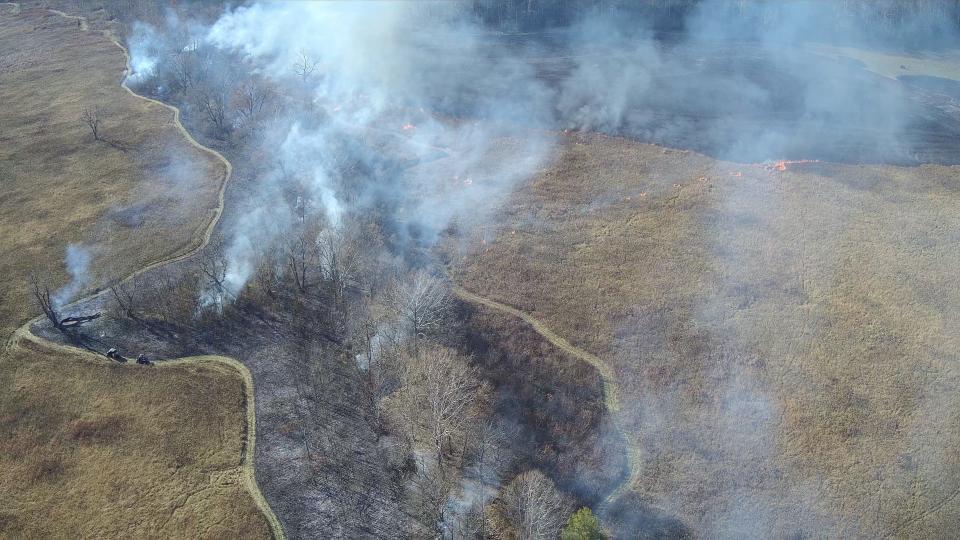
Tonihka says the strategic burns will resume in spring of 2023 and credits the success this fall to the close coordination of several partner organizations including the Nature Conservancy, Tennessee Department of Forestry–Blount County, the Bureau of Indian Affairs-Eastern Cherokee Agency, Townsend Volunteer Fire Department, and Cherokee National Forest.
Although controlled burns have been a routine part of park management for the last 20 years, the dangers posed by unplanned wildfires are still quite real in the Smokies, particularly during dry periods. On Sunday, Nov. 7, a motorcycle accident along U.S. 129 on the western boundary of Great Smoky Mountains National Park ignited a roadside wildfire that eventually impacted 40 acres before it was reported to be fully contained two days later. Approximately 60 wildland firefighters from the U.S. Forest Service and National Park Service assisted in fire suppression operations, which included hand-digging firebreak lines and aerial support from helicopter crews.

More:Word from the Smokies: Reducing artificial light at night can save thousands of park birds
More:Word from the Smokies: What we can learn from the wild turkey
In the United States, nearly nine out of 10 unplanned wildfires are caused by humans, which means it’s more important than ever to pay attention to our old pal Smokey. Over at SmokeyBear.com, you can take the Smokey pledge:
Be careful anytime you use fire or items that can cause sparks.
Never leave your fire unattended.
Drown, stir, drown again, and feel it’s cool with the back of your hand when you put out your fire.
Do NOT use fire or operate equipment when it’s windy, dry, or hot.
Make sure there are at least 15 feet between your fire and flammable things.
Always have a water source nearby.
Put out and discard smoking materials properly.
Do NOT dump hot ashes from your BBQ grill or firepit.
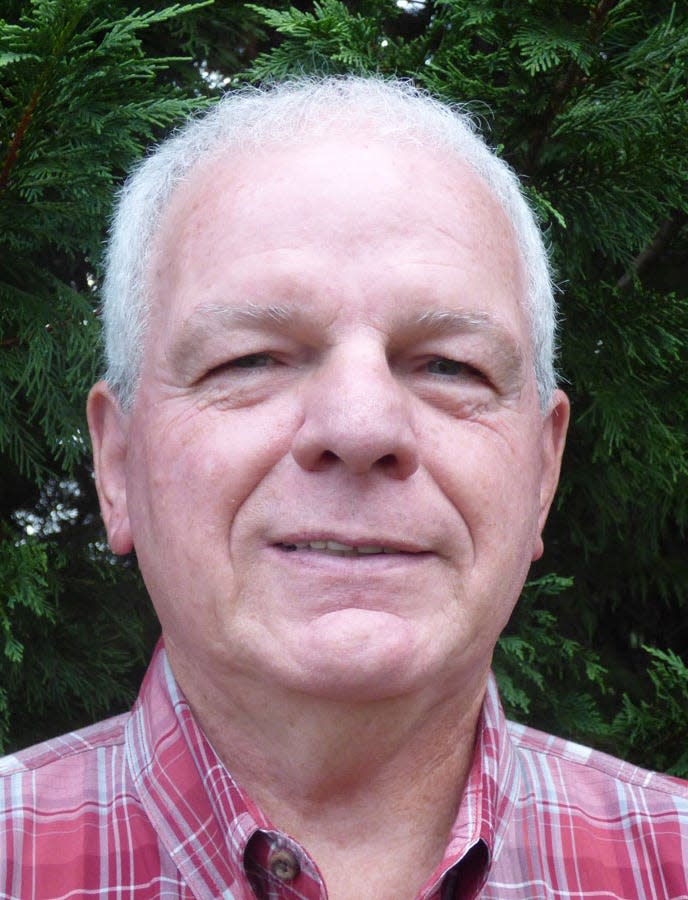
Mike Hembree is a veteran journalist and the author of 14 books. He has visited 26 national parks and hopes to add many more to that list. Great Smoky Mountains Association Publications Associate Aaron Searcy provided an editorial update for this article after the November 2022 GSMNP fire.
This article originally appeared on Asheville Citizen Times: Word from the Smokies: The staying power of Smokey Bear

